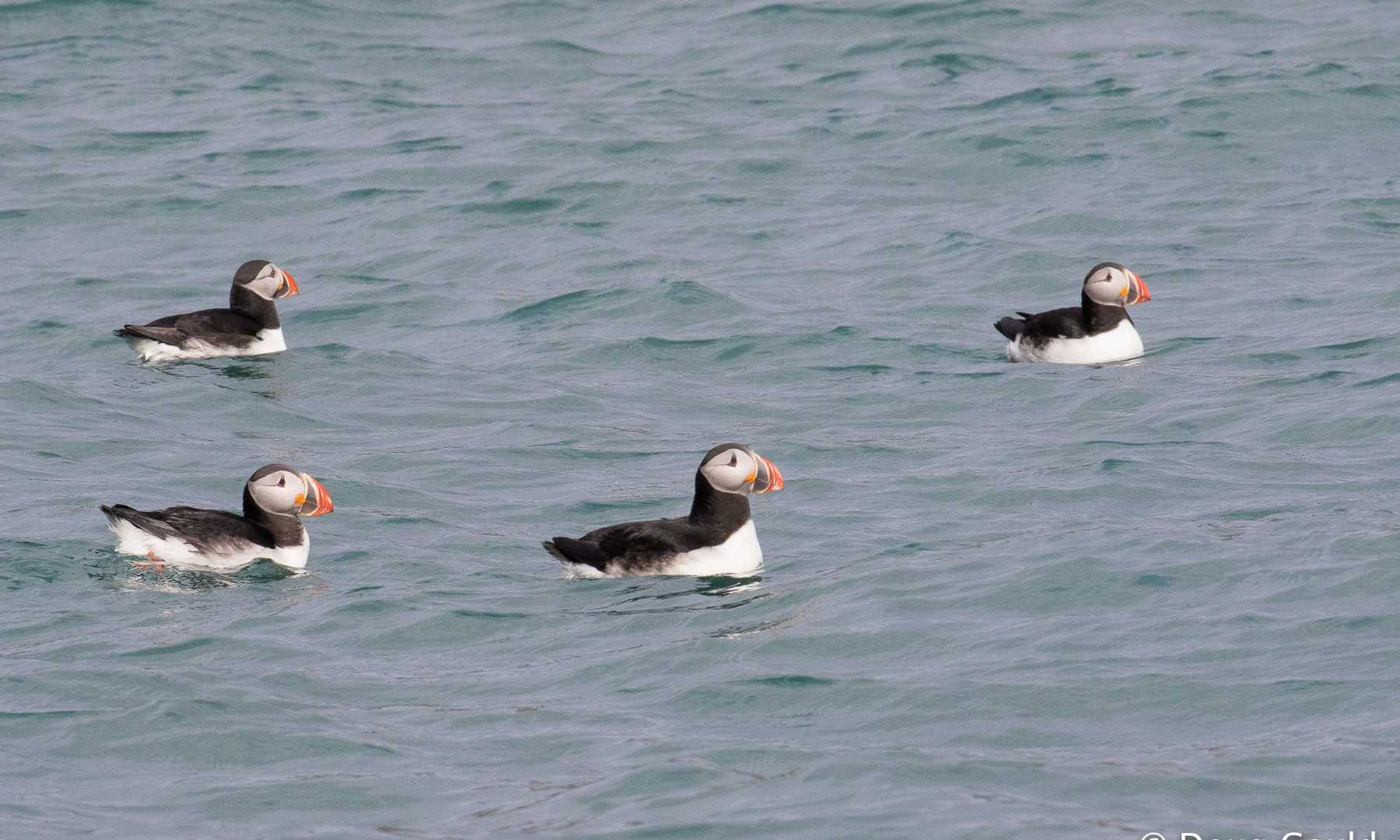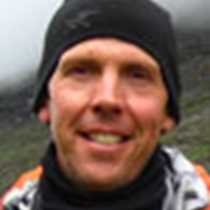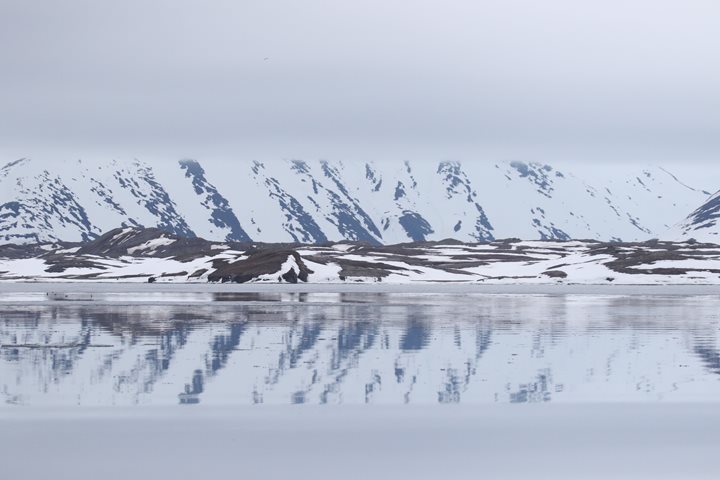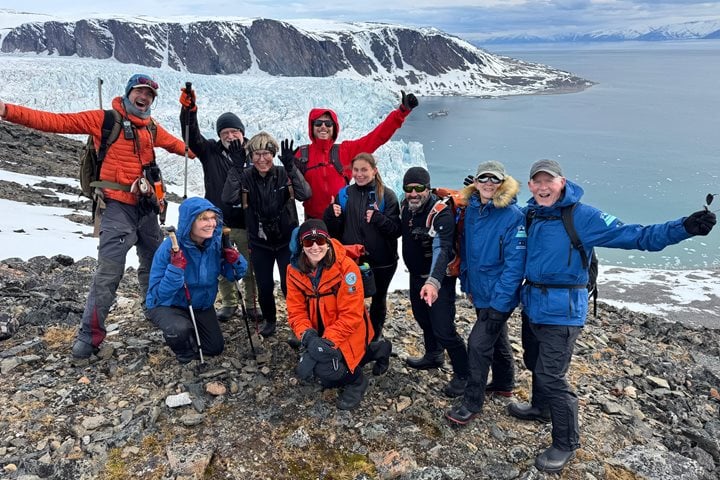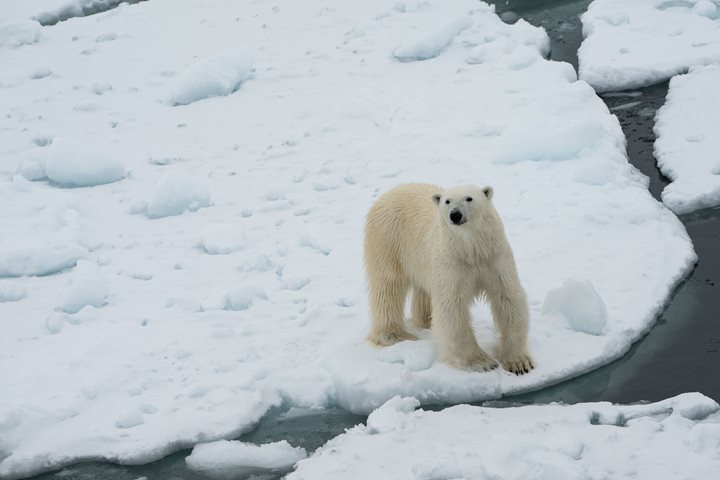The anchor dropped to announce the arrival of National Geographic Explorer at Bear Island. After a smooth transit across the southern Barents Sea from the Norwegian coast we arrived in Svalbard. Bear Island is the southernmost island administered as part of the Svalbard archipelago by the Norwegian government. With the ship anchored in Stappen, a relatively sheltered inlet at the south end of the island, we prepared for the afternoon.
Immediately after lunch we launched two groups of Zodiacs to explore the cliffs and surrounding seas. Here we found cities of birds nestled tightly on the cliffs. These huge cliffs of dolomite limestone are home to large numbers of common guillemots, kittiwakes, and northern fulmars with smaller numbers of puffin and razorbills. Cruising along the cliffs, the folding the wrenching of the Earth’s crust is evident on the cliffs. The birds seem to manage to find every possible ledge or crevice to place their nests. Floating effortlessly along the cliff faces on updrafts of air, glaucous gull patrol for the unprotected eggs (and later chicks).
Around the southwest tip we cruised further along the cliffs, we entered a cathedral-like inlet and let the Zodiacs drift quietly while a cacophony of seabirds echoes off the walls. Reaching to the sky the sheer cliffs towered above, birds everywhere. Finally, we pulled our way from this enchanting inlet and motored back out into the swell of the Barents Sea. Rocks and spires eroded from the cliff walls project out into the sea. We continued north along the coast wondering how each layer of the rocks related to some place in past. Each layer lined with a series of nests.
The nests have room for just one parent, so we look up and we see waves of birds floating on the updraft of wind and look down and we see large rafts of birds floating on the sea. Still further up the coast we cruise taking picture after picture of this surreal landscape. Alone in the Barents Sea we feel as if we are explorers discovering an unknown land. We reach a shipwreck crumbled and rusting on a narrow wave-battered beach. Here a Russian fish processing ship crashed straight into the rocks in 2009, captain drunk and the officer on deck asleep. Testament to the power of the sea and corrosiveness of seawater, only a rusted chunk of the ship remains.
Fingers cold, memory cards loaded with megapixels of memories we turn back to the south. On the way back to National Geographic Explorer we move further off the coastline and drift amongst the rafts of the seabirds. Guillemots are the most numerous and part around our Zodiacs by paddling out of our path. These birds are much better swimmers than fliers. As we get close, many patter or bounce across the surface to evade us, but most choose to dive below rather than flying away. For these auks, swimming and chasing their prey fish underwater means they have small wings and high wing loading. Taking to the sky takes effort and it is easy to imagine why they choose to nest on the towering cliffs. Now we are sufficiently cold and increase our speed and bounce across the sea back to the ship.

